The Meizu M3 Note vs. Xiaomi Redmi Note 3 Review: Comparing Notes
by Matt Humrick on July 12, 2016 8:00 AM EST- Posted in
- Smartphones
- Mobile
- Xiaomi
- Meizu
- Redmi
Design
It’s increasingly difficult to find phones made entirely from plastic anymore. Aluminum unibody construction, once reserved for only the most expensive flagships, is almost as common as fingerprint sensors now, with even lower-priced phones readily adopting the technique. The M3 note, Redmi Note 3, and the Honor 5X we previously reviewed are all examples of this trend.
The M3 note follows the same design language as the more expensive MX5 and PRO 5. It’s aluminum chassis has a smooth, sandblasted texture with curved edges on the back and generously radiused corners that make it comfortable to hold. The Redmi Note 3 follows the same formula, giving it a similar in-hand feel. It does not feel quite as sturdy as the M3 note, however. Its chassis flexes just a little more and there’s an occasional creak, although it’s not enough to be a real concern.
The front of each phone is covered in edge-to-edge glass. The Redmi Note 3 has a shiny plastic lip around the perimeter that’s raised above the glass. This helps protect the screen when the phone is sitting face down on a table, but it reduces the smoothness of edge swipes and feels scratchy when placed against the ear during a phone call. The M3 note avoids these issues by blending the front glass into the sides with a small radius.
Both phones are similar in width and have reasonably narrow side bezels, but while the M3 note shows only a very thin black border around the screen, the Redmi Note 3’s black border is noticeably thicker—thick enough to be distracting during normal use. The Redmi Note 3 (150.0 mm) is distinctly shorter than the M3 note (153.6 mm), and even the Honor 5X (151.3 mm), because of its smaller upper bezel, although this does nothing to improve one-handed use as its lower bezel is about the same size as the others.
Both phones have relatively small earpieces centered above the screen, making it difficult to hear phone conversations if the earpiece is not perfectly aligned with the ear. The M3 note’s earpiece is flanked by its front-facing camera on the left and a combined ambient light/proximity sensor on the right, creating a nicely-aligned, symmetrical layout. A white notification LED is hidden below the front fascia to the right of the ambient light sensor. Xiaomi scorns symmetry and places the Redmi Note 3’s sensors, front-facing camera, and hidden multi-colored notification/charging LED all to the right of the earpiece.
These two phones handle UI navigation differently, which the button layout below the screen reflects. The M3 note has a pill-shaped home button that also functions as a fingerprint sensor and capacitive button. There’s no free play, and it still works when pressed off center with a positive click. Unlike many other phones with a physical home button, the M3 note does not place capacitive buttons to either side, which we’ll discuss more in the software section. In comparison, the Redmi Note 3’s lower bezel is more traditional. From left to right, there’s capacitive buttons for recent apps, home, and back. The buttons are backlit, but are not very bright, and the order cannot be changed.
Both phones place the sleep/wake button and single-piece volume rocker just above the midpoint on the right edge within easy reach. All of the buttons produce a nice, solid click, and are stiff enough to prevent accidental presses when picking up the phone, but there’s just a little more free play in the M3 note’s buttons. Each phone’s card tray sits opposite the volume rocker on the left side.
There’s a 3.5mm headphone jack and a noise-cancelling microphone on the top of each phone. The Redmi Note 3 also has a small window for its IR blaster. We see some big differences again when looking at the bottom of the phones. The M3 note uses a symmetrical layout with two sets of holes flanking a central microUSB port. Its single speaker sits behind the right grille, while the primary microphone sits behind the left. Once again Xiaomi shuns symmetry, placing its microphone and microUSB port in the left corner. This placement could lead to compatibility issues with some third-party docks/peripherals that are designed for a central port.
Flipping the phones over we see that both rear cameras are centered within a circular black surround with polished accent and sit flush with the flat aluminum back. Both phones also hide their antennas behind plastic caps at the top and bottom of the phone instead of incorporating plastic antenna lines like we usually see on all-metal phones. The color and texture of the caps closely match the metallic finish on the back, although there is some color variation when viewed from different angles or in certain lighting conditions. Meizu adds some decorative flair to the M3 note by machining some polished slots into the chassis, effectively hiding the seam between the aluminum back and plastic caps.
Unlike the M3 note, the Redmi Note 3’s fingerprint sensor is on the back. This is currently the most common location, although the ideal placement is a matter of personal preference. Placing the sensor on the back puts it within easy reach of the index finger when holding the phone, but it also eliminates the possibility of using it to unlock the phone when it’s resting on a table. The Redmi Note 3’s external speaker is also on the back underneath a series of small holes near the bottom.
While these phones are similar in materials and construction, they each communicate a different design language. Meizu makes heavy use of symmetry, beveled cover glass, and more complicated machining—the concave groove for the buttons on the side and the polished slots on the back—to help elevate the M3 note’s look and feel to flagship levels. Xiaomi’s styling for the Redmi Note 3 is more traditional, with a raised plastic lip around the screen and fixed capacitive buttons below. The Redmi Note 3 also lacks the symmetry and machining flourish of the M3 note. While I personally find the M3 note more visually appealing, neither phone looks or feels cheap. Even the color options—silver with white front, dark gray with black front, and gold on gold for the Redmi Note 3 and gold on white for the M3 note—are subtle and classy looking.


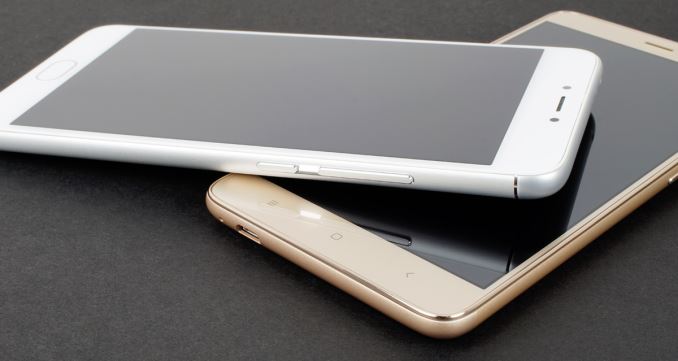
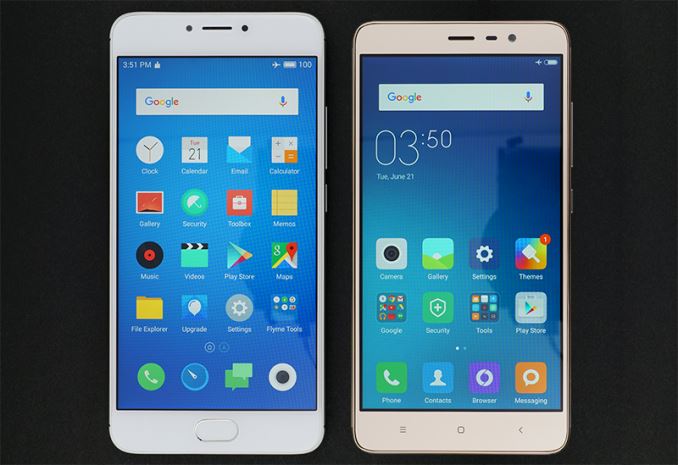

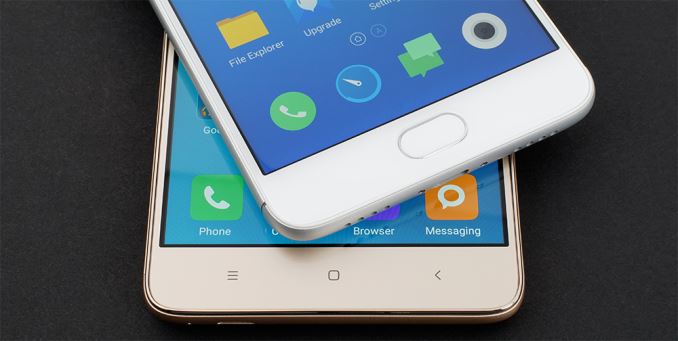
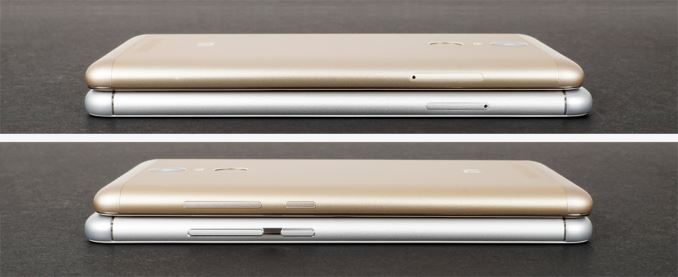

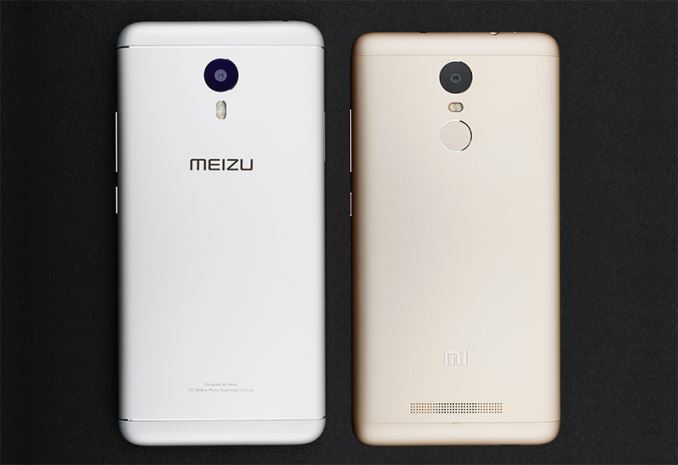
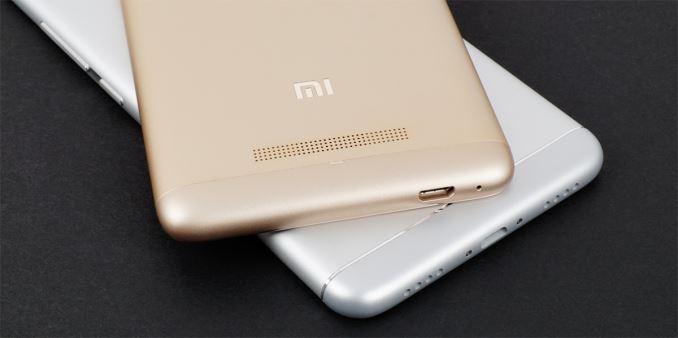








79 Comments
View All Comments
kpb321 - Tuesday, July 12, 2016 - link
The article Matt posted is good but the short answer is that it is a combination of the Modem in the SOC, the antenna's/filters/amplifiers in the phone and the software configuration for the Modem that determine the supported band(s). Usually the antenna's/filters/amplifiers are the real limiting factor as modern SOCs all support a large variety of different bands and the software configuration can be changed.Death666Angel - Tuesday, July 12, 2016 - link
On that point, I think there are people on XDA who have flashed Qualcomm based Chinese phones with missing Band20 LTE and gotten it to work with Band20. Only QC based phones so far though.adityarjun - Wednesday, July 13, 2016 - link
Thank you all. I had a feeling it was the antenna/amplifier part. I will go over the article Matt posted. Thanks again.ianmills - Tuesday, July 12, 2016 - link
This review missed the biggest weakness of the xiaomi IMHO. The phone is very slippery and hard to hold. This causes me to hold the phone tightly in order to prevent dropping it. This leads to the next problem. The forced gripping of the phone means that my holding fingers often touch the edge of the screen which means lots of accidental presses. The capacitive buttons at the bottom of the phone are so close to the edge that they are accidentally touched as well.I could use a case to remedy this, but this is already as very big phone. Instead I put stickers on to give it texture and make it easier to hold. Works decent but the stickers keep fall off....
fanofanand - Tuesday, July 12, 2016 - link
Sounds like my Nexus 4 that lasted all of 8 days before falling 3 feet to it's demise.ianmills - Tuesday, July 12, 2016 - link
Much worse than the N4. I remember the N4 being a problem until I learned to hold it properly. I've had the Xiaomi for about 4 months now and holding it is still a major problem. You won't think the N4 back glass is slippery anymore after holding this phone :PImpulses - Thursday, July 14, 2016 - link
Yeah, glass actually ends up stickier and mates more surface area against anything else... Brushed metal with very smooth edges and no trim ends up being very slippery.Pissedoffyouth - Wednesday, July 13, 2016 - link
I definitely don't have this problem. You can get ultra-thin grippy cases that don't add much bulk to the phone.TheCurve - Tuesday, July 12, 2016 - link
Solid and opportune review. Thanks for the good work, Mattjjj - Tuesday, July 12, 2016 - link
At least for SoCs you haven't reviewed before you guys need a CPU benchmark too. PCMark and Dicsomark are very software dependent and the browsing benchmarks are kinda sucky.The clear leader in perf per $ is the 360 Mobile N4. With Helio X20 (MT6797m) , 4GB RAM, fast charging at 899CNY(135$).